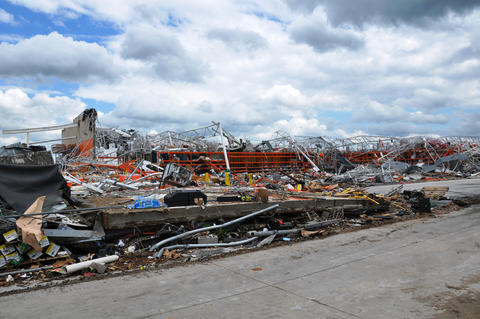FY13: Measurement and Standards for Disaster Resilience and Natural Hazards Risk Reduction
(+$5 million)
Challenge

Critically needed metrics, tools, and standards to ensure community-level resilience do not exist to enable communities to recover rapidly from these disasters with minimal loss of life, minimal damage to buildings and infrastructure lifelines, and minimal business disruption.
NIST has significant statutory responsibilities in these areas, including the National Earthquake Hazards Reduction Program (2004), the National Construction Safety Team Act (2002), the National Windstorm Hazard Reduction Act (2004), and the Fire Prevention and Control Act (1974). Furthermore, NIST is home to the Engineering Laboratory, whose research is used to improve and strengthen standards, codes, and practices worldwide.
Proposed NIST Program
Through a multi-year, public-private partnership program strategy, this funding will enable NIST to work with stakeholder interests in all hazard areas to develop and adopt a national resilience framework and associated resilience models, standards, and policies. Additionally, NIST will help address the extraordinary R&D gaps (in both magnitude and scope) to realize the full potential of national resilience.
Key elements of the NIST program will include:
Convening a private-sector group to develop resilience framework and model resilience standards and policies
($3 million)
NIST will provide leadership to convene the highly diverse stakeholder interests—planners; designers; contractors; and federal, state, and local officials; as well as standards developing (SDOs), code, industry, and professional organizations—across all infrastructure sectors to develop and adopt a national resilience framework and associated model resilience standards and policies. This will include formation of a private sector-led, government-funded National Model Resilience Standards Panel (NMRSP) to engage the larger community and to accelerate the development of standards.
Standards for community and regional resilience need to address (1) lifeline systems, with an emphasis on critical physical infrastructure systems, (2) new and existing buildings, particularly those essential to community resilience, and (3) communities that are severely threatened by fires at the wildland-urban interface and by extreme weather events.
Leading an effort focused on bridging the research and development gaps in critical building and lifeline resilience
($2 million)
NIST will work with stakeholders to realize the full potential of national resilience and develop critical measurement science tools needed by U.S. industry for: (1) risk-based condition assessment of aging infrastructure systems; (2) determining the remaining service life—and guiding development and use—of sustainable infrastructure materials; and (3) ensuring the disaster resilience of structures under extreme conditions (specifically, hurricanes, tornadoes, and other windstorms). Solutions will require active partnership with the private-sector (including the NMRSP), academia, and other organizations and agencies.
Expected Impacts
This initiative is focused directly on finding solutions to the six Grand Challenges identified by the President's National Science and Technology Council in June 2005. It will improve the nation's ability to respond to disasters by:
- providing hazard and disaster information where and when it is needed;
- improving understanding of the natural processes that produce hazards;
- developing hazard mitigation strategies and technologies;
- assessing disaster resilience using standard methods; and
- promoting risk-wise behavior.

